Alaska Economic Trends
Alaska Economic Trends is a monthly magazine that covers a range of economic topics.
Sign up for a free electronic subscription. 
Sign up for a paid print subscription.
Alaska Economic Trends are searchable from 1961 to the present using the Trends search page. The search can include any combination of the following: Key Words, Date Range, Author, Category
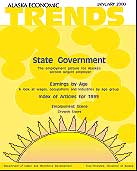
Alaska state government, including the University of Alaska and state-owned corporations such as the Alaska Railroad and the Alaska Housing Finance Corporation, is the second largest employer in the state. With nearly 22,000 employees, it takes the second spot after the federal government (including uniformed military) among Alaska's largest employers.
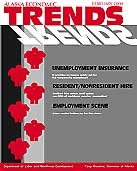
In the depths of the Great Depression in 1935, the U.S. Congress passed the Social Security Act, establishing an economic stabilization program of partial wage replacement for workers during periods of temporary, involuntary unemployment.

Representation and direct Taxes shall be apportioned among the several States which may be included within this Union, according to their respective Numbers.. The actual Enumeration shall be made within three Years after the first Meeting of the Congress of the United States, and within every subsequent Term of ten Years, in such Manner as they shall by Law direct.
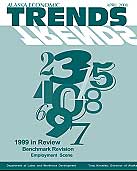
Despite job losses due to consolidation, Alaska's economy managed to post its eleventh consecutive year of job gains in 1999. Alaska's job base grew 2,600 jobs, pushing the annual average wage and salary employment to 277,600.
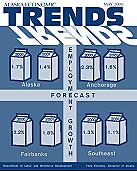
Alaska's economy will continue to grow through 2001, rebounding from the slow growth rate posted in 1999. (See Exhibit 1.) In all, more than 8,000 new jobs will be added during the next two years.

How expensive is it to live in Alaska? What is the rate of inflation in Alaska? These are two of the questions most frequently asked of the Alaska Department of Labor and Workforce Development's Research and Analysis Section.

Economic indicators for the Matanuska- Susitna Borough all tell the same story. Population, employment, inmigration, highway counts and the number of new homes being built all say that Mat-Su is the fastest growing area in the state.
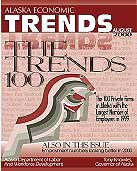
In 1999 there was a slightly new twist for the top employer. For eight years, Carr Gottstein Foods was the number one employer in Alaska. But that changed with the acquisition of Carrs by Safeway, which ranked tenth last year.

Historically, Alaska has had a relatively young population. Oil pipeline construction in the mid-1970s and the employment boom associated with high oil prices in the early 80's brought a large number of young workers to Alaska.
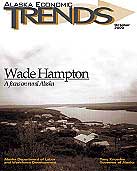
Wade Hampton Census Area encompasses an area of 17,124 square miles, more than twice the size of Massachusetts.

At 42 deaths in 1999, the number of fatal work injuries in Alaska inched downward, changing only slightly from the previous year.
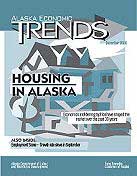
Since Alaska became a state in 1959, its population has nearly tripled to more than 622,000. Much of this growth has occured during distinct periods of economic expansion, or "booms" in the economy.
